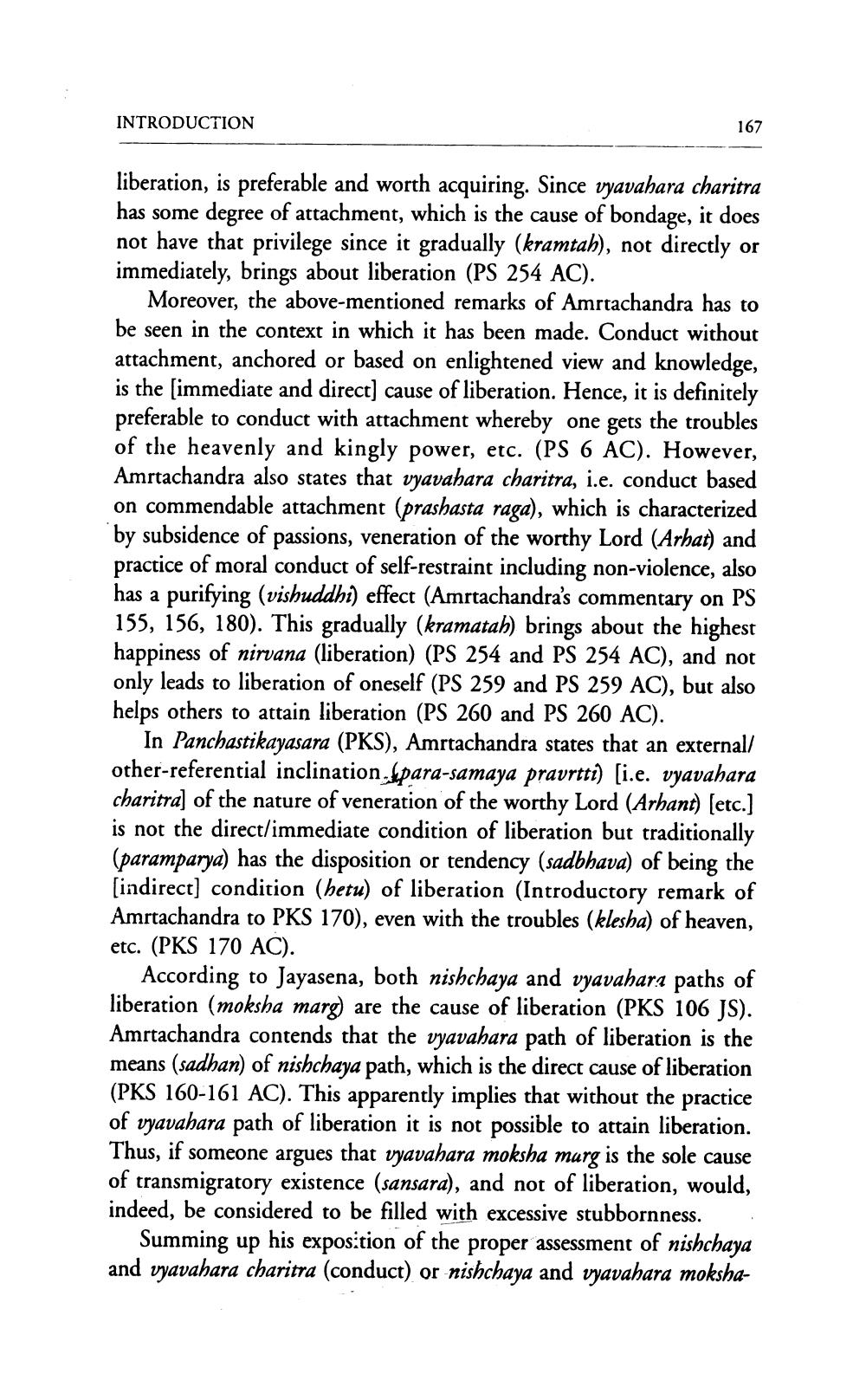________________
INTRODUCTION
167
liberation, is preferable and worth acquiring. Since vyavahara charitra has some degree of attachment, which is the cause of bondage, it does not have that privilege since it gradually (kramtah), not directly or immediately, brings about liberation (PS 254 AC).
Moreover, the above-mentioned remarks of Amrtachandra has to be seen in the context in which it has been made. Conduct without attachment, anchored or based on enlightened view and knowledge, is the [immediate and direct] cause of liberation. Hence, it is definitely preferable to conduct with attachment whereby one gets the troubles of the heavenly and kingly power, etc. (PS 6 AC). However, Amrtachandra also states that vyavahara charitra, i.e. conduct based on commendable attachment (prashasta raga), which is characterized by subsidence of passions, veneration of the worthy Lord (Arhat) and practice of moral conduct of self-restraint including non-violence, also has a purifying (vishuddhi) effect (Amrtachandra's commentary on PS 155, 156, 180). This gradually (kramatah) brings about the highest happiness of nirvana (liberation) (PS 254 and PS 254 AC), and not only leads to liberation of oneself (PS 259 and PS 259 AC), but also helps others to attain liberation (PS 260 and PS 260 AC).
In Panchastikayasara (PKS), Amrtachandra states that an external/ other-referential inclination Spara-samaya pravrtti) [i.e. vyavahara charitra] of the nature of veneration of the worthy Lord (Arhant) (etc.) is not the direct/immediate condition of liberation but traditionally (paramparya) has the disposition or tendency (sadbhava) of being the [indirect condition (hetu) of liberation (Introductory remark of Amrtachandra to PKS 170), even with the troubles (klesha) of heaven, etc. (PKS 170 AC).
According to Jayasena, both nishchaya and vyavahara paths of liberation (moksha marg) are the cause of liberation (PKS 106 JS). Amrtachandra contends that the vyavahara path of liberation is the means (sadhan) of nishchaya path, which is the direct cause of liberation (PKS 160-161 AC). This apparently implies that without the practice of vyavahara path of liberation it is not possible to attain liberation. Thus, if someone argues that vyavahara moksha murg is the sole cause of transmigratory existence (sansara), and not of liberation, would, indeed, be considered to be filled with excessive stubbornness.
Summing up his exposition of the proper assessment of nishchaya and vyavahara charitra (conduct) or nishchaya and vyavahara moksha




